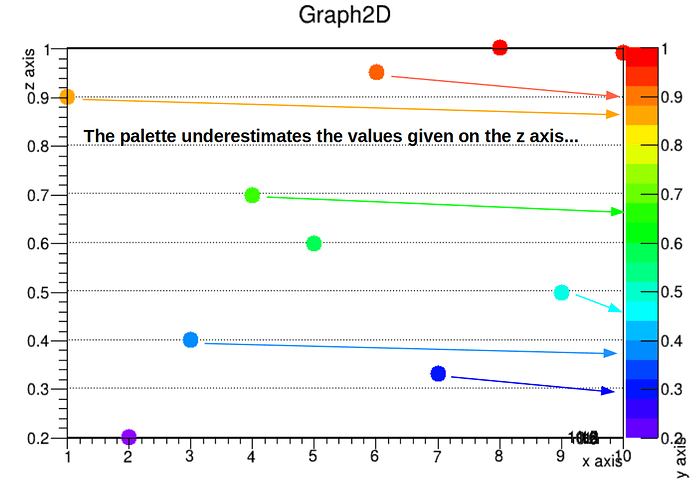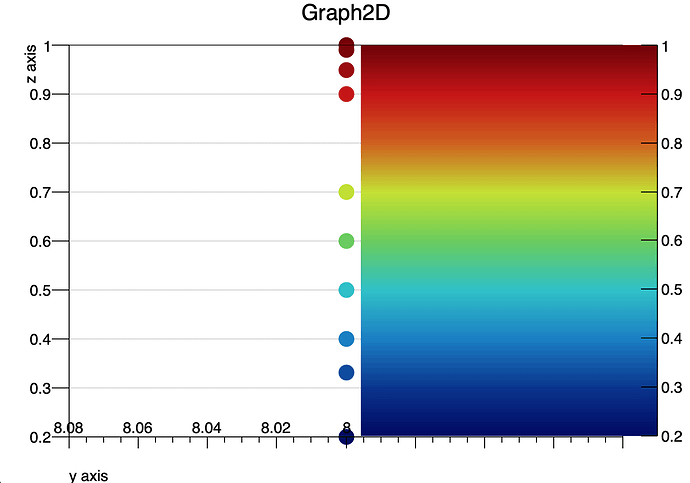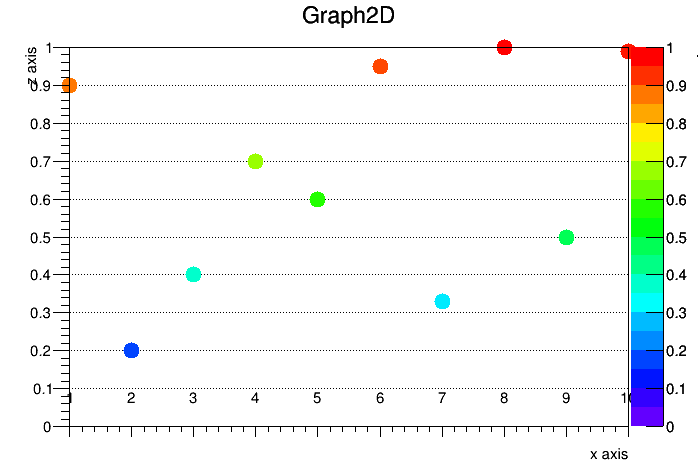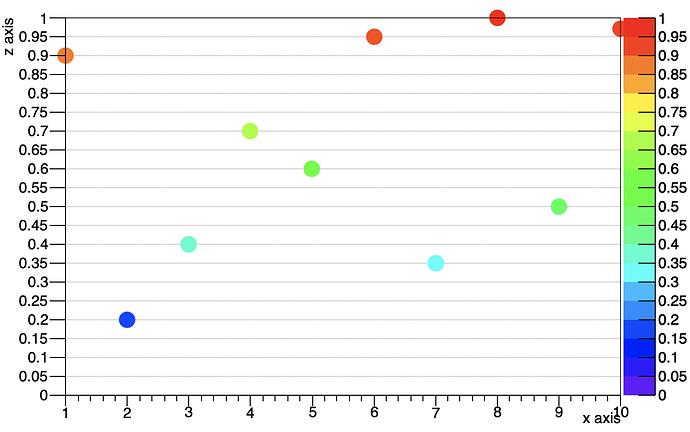Hello,
The palette displays a shifted scale on the values on the z axis on a TGraph2D. It shows as if the ploted values were smaller than what I entered. I tried using a TH2 object, and the values are matching the palette scale, but using a TGraph2D is more appropriate for my work. I did tests on a simplified code. I show below the output that I rotated to display the z-axis in parallel with the palette scale.
I also tried to increase the default “NunberContours” – same issue.
I would be grateful if someone can tell me how to correct this shift in the palette scale.
Cheers,
Richard.
_ROOT Version: 6.24/06
_Platform: Ubuntu 20.04.4 LTS
Compiler: gcc version 9.4.0 (Ubuntu 9.4.0-1ubuntu1~20.04.1)
{
const Int_t N = 10;
Float_t x[N]= {1. , 2. , 3. , 4. , 5. , 6. , 7. , 8., 9. , 10. };
Float_t y[N]= {10., 12. , 11. , 8. , 10. , 10. , 12. , 11., 8. , 10. };
Float_t z[N]= {0.9, 0.2, 0.4, 0.7, 0.6, 0.95, 0.33, 1.0, 0.5, 0.99};
gStyle->SetPalette(1);
TGraph2D *g=new TGraph2D(N,x,y,z);
g->SetMarkerStyle(kFullCircle);
g->SetMarkerSize(2);
g->Draw("PCOLZ");
gPad->SetGridx(); // not working
gPad->SetGridy(); // not working
//g->SetMinimum(0.2);
//g->SetMaximum(1.0);
gPad->SetTheta(90.); gPad->SetPhi(0.001);
g->GetXaxis()->SetTitle("x axis");
g->GetYaxis()->SetTitle("y axis");
g->GetZaxis()->SetTitle("z axis");
c1->Print("Test_Graph_2D.png");
}



